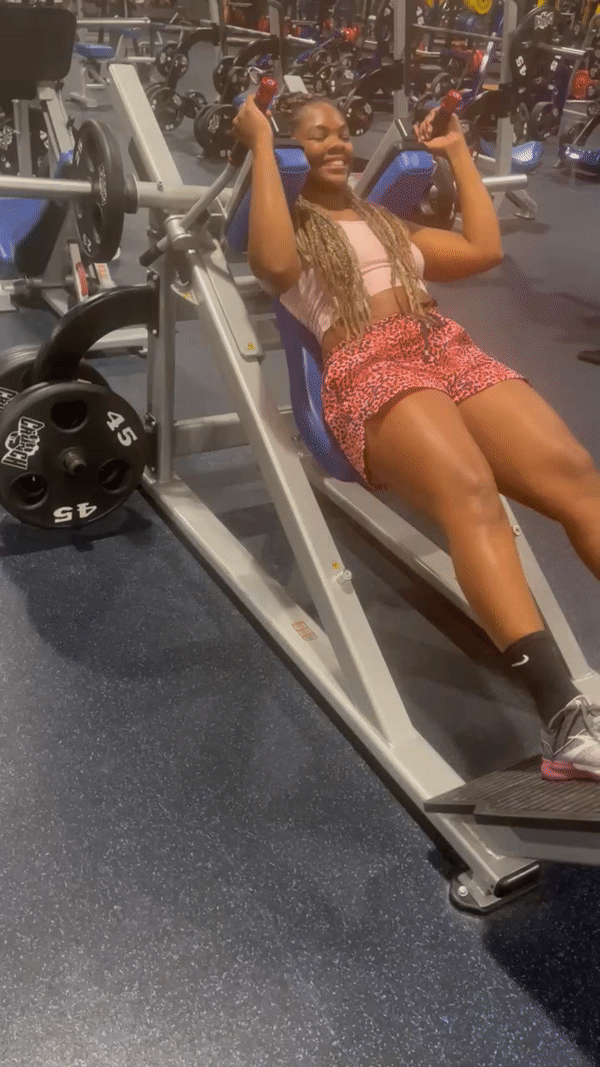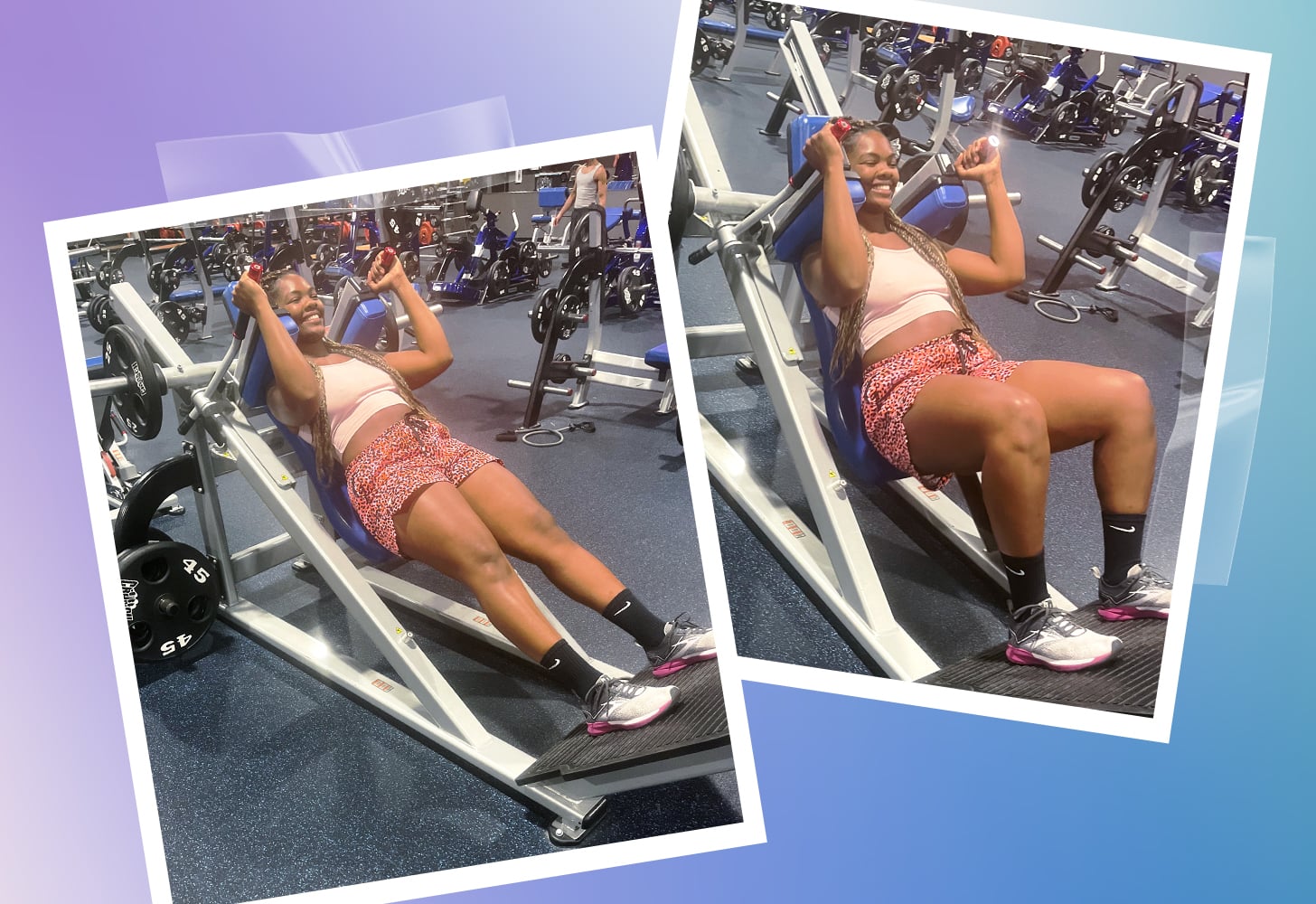One of the most well-known exercises, period, is the squat. The exercise comes in countless different variations — think: the back squat, front squat, sumo squat — and can be performed with a variety of workout equipment, from resistance bands and barbells to other free weights. If you’re new to fitness or rehabilitating from an injury, however, some of these variations can be challenging, or you may be looking for a lower-intensity modification. If that’s you, then the hack-squat machine can be a great squat alternative.
The hack squat offers similar lower-body strength benefits to traditional squats, plus a few additional perks. The machine places you in the correct squat form and provides stability throughout the entire movement, while also allowing you to add weight. This can translate to more muscle gains with less injury risk.
We spoke with coaches and trainers to get more insight into how the hack squat stacks up against its counterparts. Keep reading to learn how to do hack squats, the muscles worked by hack squats, the difference between hack squats and reverse hack squats, alternative moves, and more.
What Is a Hack Squat?
The hack squat is a squat performed on a plate-loaded machine. The hack-squat machine typically has a fixed, angled platform that you stand on, and a movable backrest with shoulder pads and handles that slide up and down a track as you squat. The hack-squat machine is best utilized as a supplement to other compound exercises, like a deadlift or split squat, or as part of a leg day workout.
The name “hack squat” most commonly refers to squats done on a hack-squat machine, and that’s what we’re referring to when we say “hack squat” throughout this article. However, it’s worth noting that a hack squat can also be performed with a barbell; this variation is for more advanced lifters and is performed by placing a barbell behind your legs and squatting.
The Benefits of Hack Squats
The hack squat is the “safest and most fun way” to get your squat numbers up (i.e. lift more weight), says Wesley Brown, ISSA-certified personal trainer. “There is very little risk if you want to squat to failure, blast through a plateau, or rehabilitate,” Brown explains.
Similar to other gym machines (think: the leg extension or hamstring curl machine), the hack-squat machine moves you through a fixed motion. This helps isolate your lower body, as well as stabilize your hips, knees, and core while performing a squat — but still lets you do the work of pushing the weight. “You’ll be surprised at how much strength and confidence builds up in your ability to push heavy with this lift,” Brown says.
If you’re a beginner, the hack squat is an excellent tool, especially when done with the help of a trainer. It teaches beginners the correct range of motion for a squat, how to drive properly through the feet, and how to brace the core.
When doing hack squats, your upper body is supported by the back of the machine, which eliminates a lot of the strain you may feel in your lower back when doing barbell back squats. Plus, if you struggle with shoulder mobility during barbell back squats, the hack squat may be a better choice. It mimics the grip of a safety bar (the barbell that has two handles about shoulder-width apart) but protects you from having to stabilize a heavy bar on your back.
Along with the ergonomic benefits of the machine, the hack squat can also come in handy for athletes and rehabilitative training. For example, if you hurt your back and can’t squat normally, the hack squat can be used at the direction of a doctor, physical therapist, or strength coach. “For athletes, the hack squat is great for both in-season and off-season training [because it] allows them to push heavier loads,” says strength and conditioning coach, Liz Trace, BS. As a result, “athletes will be able to see more hypertrophy and strength gains in its targeted areas.”
Which Muscles Does the Hack Squat Work?
Hack squats largely work the same muscles as a regular squat; however, the tilted position of the machine’s platform means that the exercise puts extra emphasis on the quadricep femoris (the muscles on the front of your thighs). Hack squats also work other muscle groups including the glutes, hamstrings, and calves, though not as much as they would in a traditional squat. And as the weight moves upward, the abdominal muscles and erector spinae (muscles that run alongside your vertebrae) contribute to the full movement of the exercise.

How to Do a Hack Squat
For the hack squat, start with a weight where you can perform 2-3 sets of 8-12 repetitions. The beauty of the hack-squat machine is that once you get started, the machine assists with keeping your form. Here’s the proper way to perform the hack squat according to Brown:
- Find the hack-squat machine in your gym (if your gym doesn’t have a machine, keep reading for a hack squat alternative).
- Stand in the hack-squat machine with your feet hip-width apart and your shoulders under the shoulder pads, hips and back rested on the back rest, and hands holding the handles.
- On an inhale, bend your knees to lower your body until your thighs are parallel to the platform (or beyond parallel, if that’s accessible for you). Keep your back, hips, and shoulders locked in place, with your core engaged.
- On the exhale, push your feet into the platform to straighten and light the platform up to return to the starting position. That’s one rep.
Hack Squats vs. Reverse Hack Squats
If you’re on GymTok, you’ve probably seen people using the hack-squat machine, but in reverse: doing squats facing the backrest instead of leaning against it, sometimes called a reverse hack squat.
While both moves use the same machine, the traditional hack squat and reverse hack squat are biomechanically different, and thus put a focus on different muscles. The reverse hack squat places more emphasis on the posterior chain (glutes and hamstrings), whereas the traditional hack squat focuses on the quadriceps.
The reverse style more closely mimics the barbell back squat, which is a powerful compound exercise, and has serious potential for strength and hypertrophy gains. Because of this, you may be able to lift more weight when doing reverse hack squats compare to regular hack squats.
And because the reverse hack squat is more hip-dominant, it’s also less stable, making it a better option for intermediate and advanced lifters. If you haven’t learned how to brace your core, you may be putting yourself at risk of a back injury if you try reverse hack squats and don’t use proper form.
If you are going to try a reverse hack squat, keep these form tips in mind: One of the more common mistakes people make with the reverse hack squat is the hyperextension (i.e. arching) of their lower back. To prevent this and prime your body for the reverse hack squat, you should master the hip-hinge movement pattern. You can practice this movement with exercises like Romanian deadlifts, or good mornings.
@whitneyysimmons ‼️ I RETRACT MY STATEMENT ‼️ so anyways…. #hacksquat #howtohacksquat #glutedaypump #glutedayworkout #quaddaybaby #legdayfeels
Hack Squat Alternatives
Once you feel like you have a good handle on the hack-squat machine, you can advance your workout by switching to the reverse hack squat, as described above, or trying other modifications that replicate the same pattern without the machine.
Landmine Squat
The landmine squat (as demonstrated here by celebrity trainer Ben Bruno) is a great alternative to the hack squat. The exercise places your body in an upright position with a braced core. It places the load in front of you (so it’s quad-dominant, just like the hack squat) but also offloads a portion of the weight onto the floor. This moves helps you learn to use your legs to drive the weight upwards, similar to the hack squat.
Smith Machine Hack Squat
The Smith machine provides the same fixed path as the hack-squat machine. Instead of standing directly under the bar, you’ll position your feet one step in front of you, lean slightly back, and place the bar across your shoulders. This angle will allow you to work your quads in a similar way to the hack squat, with more hip freedom.
Goblet Squat
The goblet squat is comparable to the hack squat but uses a dumbbell or kettlebell. While often used as a stepping stone when learning other squat variations, the goblet squat is also a compound exercise in itself. When performed with proper form, the goblet squat does a great job simulating the hack squat’s upright torso and is great for building a stronger core while remaining beginner-friendly.
Image Source: Image Source: D’Annette Stephens; Photo Illustration: Michelle Alfonso
